peer sight
UI/UX collaborative web space
Synchronous on-line communication tool
Concept incorporates applied attention theory including shared attention
Functional proof-of-concept tested in experimental conditions with IRB approval
MFA thesis: Mediating an experience: an approach to designing a compelling synchronous, distant, virtual communication environment
The current state of on-line, synchronous communication environments support an idealistic but unrealistic metaphor for the way people interact during a typical presentation. Available solutions purport simultaneous input from all parties involved rather than a presenter- to-attendee model analogous to a group presentation or classroom setting. Independent of the specific context, whether it be education or business, the intent of this inquiry and concept development is to challenge current models of on-line, synchronous communication and conduct practical research to create a model that defines a rich, one-to-many experience.
The end result is a new communication model that employs design rationale and process to improve the state of real world, on-line collaboration. On-line technologies enable users to communicate in entirely new ways and, most significantly, from remote locations. Often a new technology is first expressed as a crude collection of tools—design and human factors are forgotten. Presented here are the user’s expectations, needs and desires, the adaptation of traditional and familiar communication mediums, and the exploitation of current technologies to serve design sensibilities.
To illustrate the usability of the model and the dynamics of the experience, the results of an experiment employing a designed prototype are analyzed. The results indicate that a carefully designed virtual environment can compensate for the lack of physical collocation for a medium- sized university lecture. From a multi-disciplinary perspective, the prototype is evaluated based on a proposed set of criteria for designing a synchronous, on-line experience.

—The research indicated that presenting is not a collaborative event—instead Peer Sight adopts a one-to-many communication model
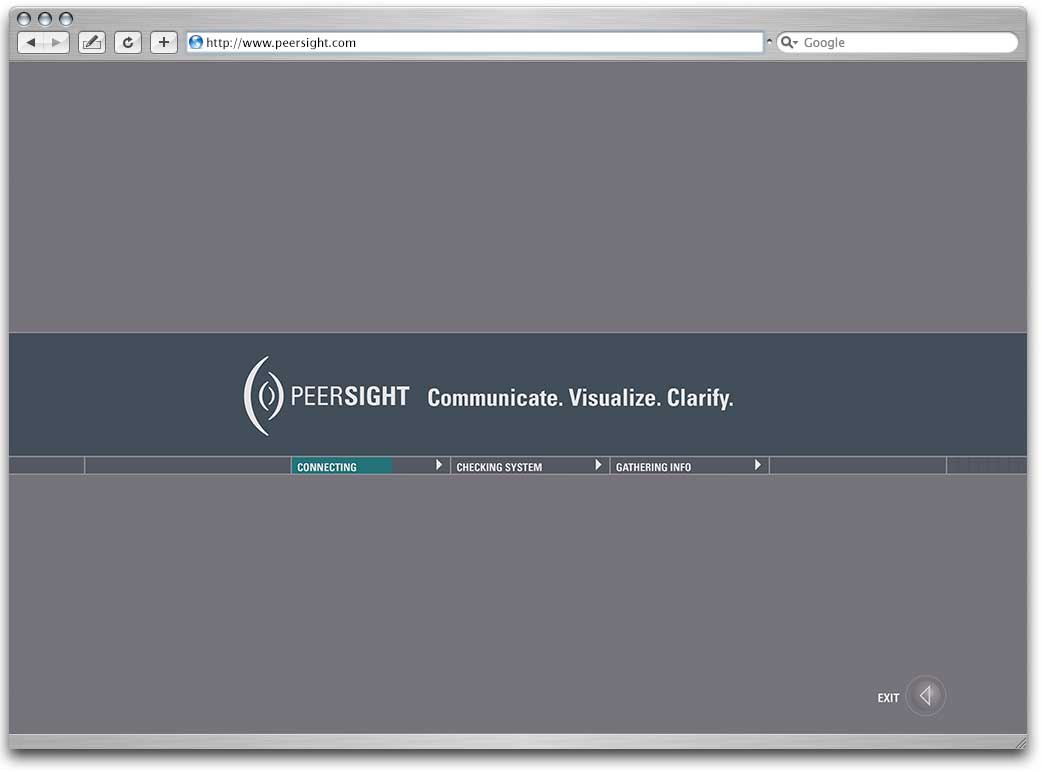


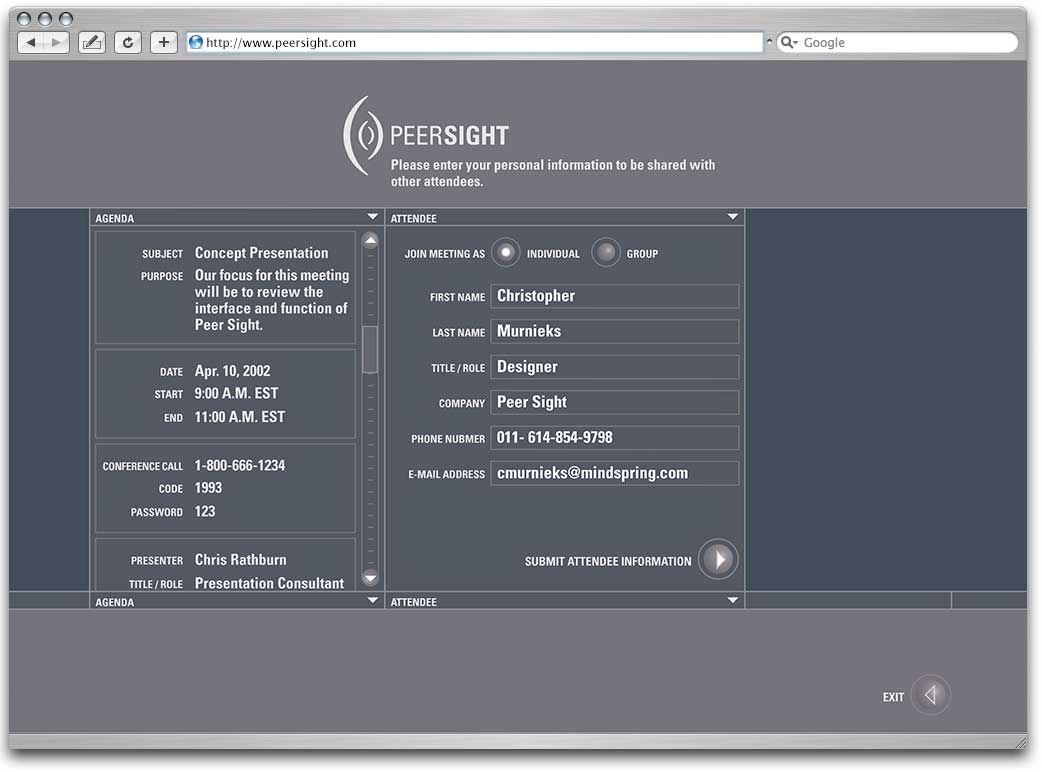
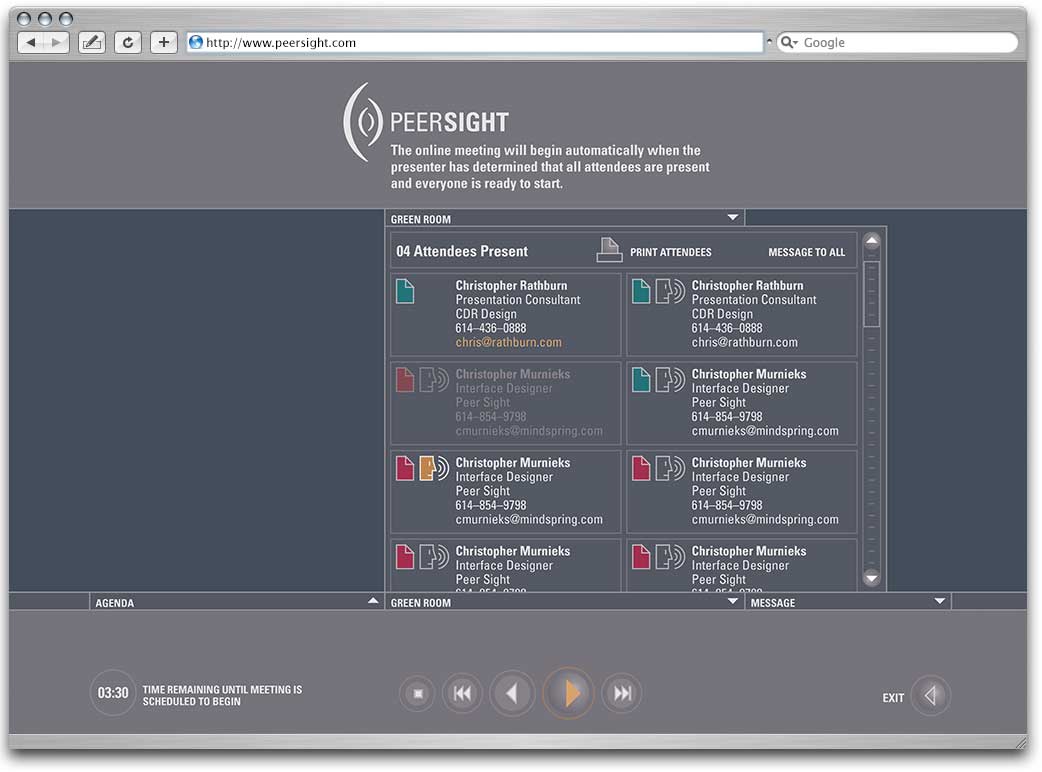
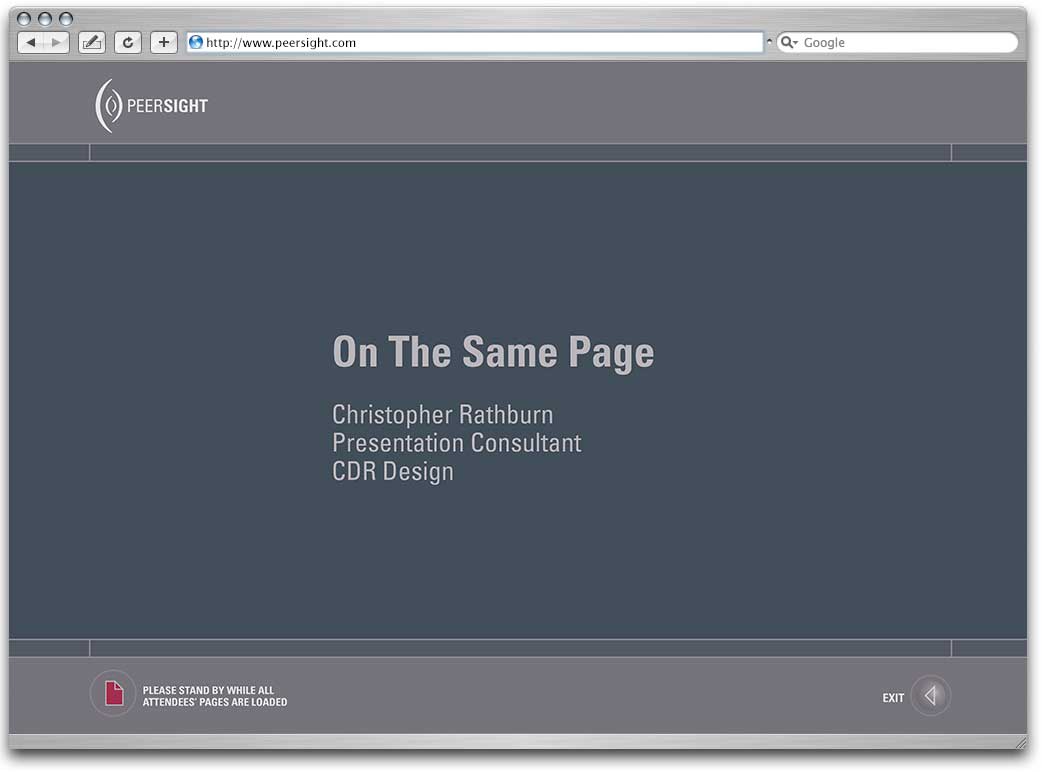
—The key to success is ease of use and perceived shared attention—but also compensating digitally for the lack of co-location.
Research Questions
What impact does the distance, synchronous CME have on the experience for a university lecture when substituted for a traditional, face-to-face environment? Inevitably, trade-offs are part of shaping a radically different kind of communication environment. Designing this kind of environment following the aforementioned guidelines begs the question: How does it perform? What kind of evaluation can test the integrity of the distant, collaborative environment? The very idea of distance collaboration means that the people on the other end of the line are not in a controlled environment. Controlled experimental conditions would offset the idea that participants of distance collaboration choose their own environment. If the idea of the CME is to substitute for traditional, face-to-face communication, then a test of how a change in environment affects the experience affirms the CME as an alternative collaborative medium.
The hypothesis is as follows: For a typical university lecture, attending a distance class via the synchronous CME prototype provides a similar experience compared to the traditional, collocated environment.
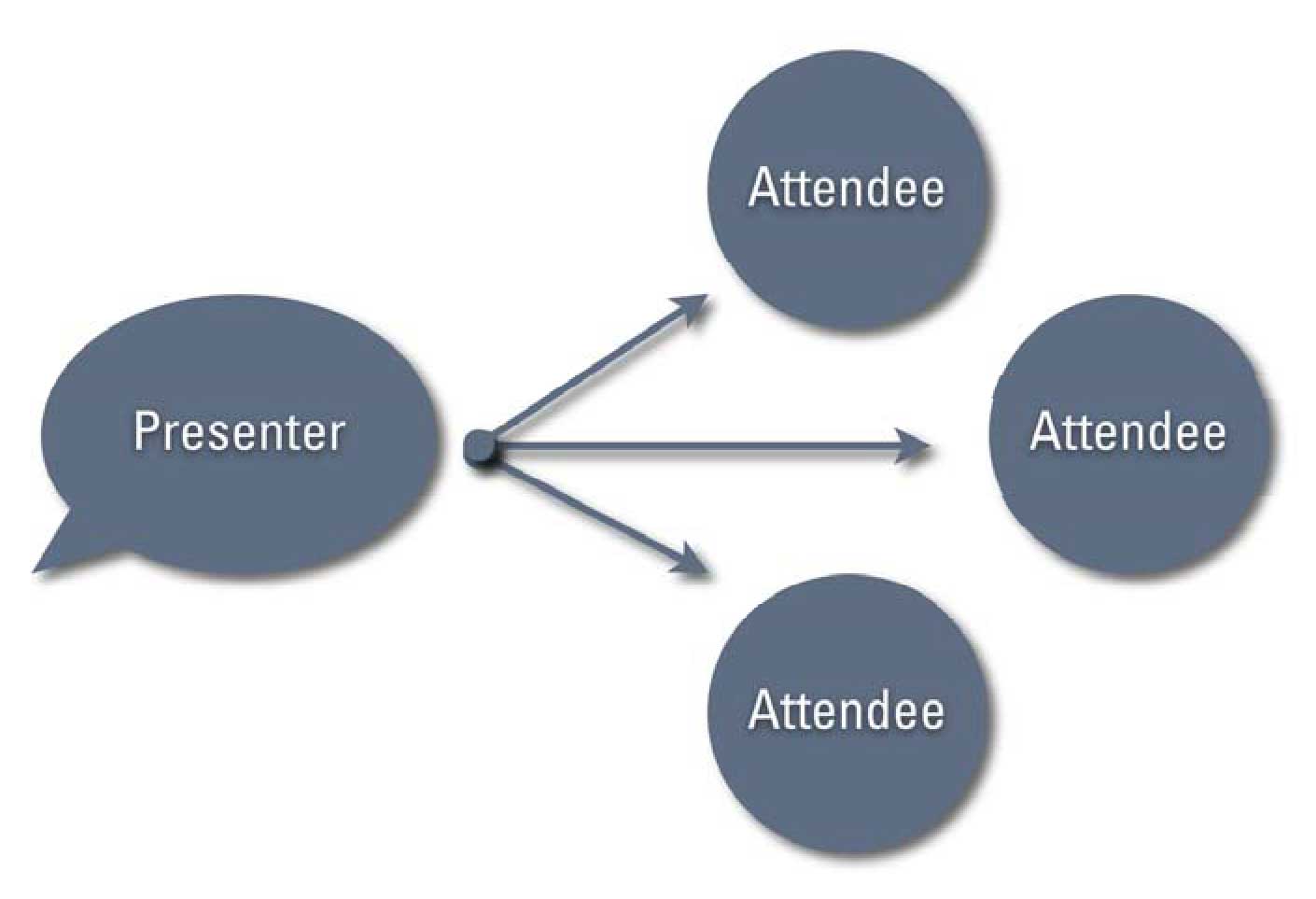
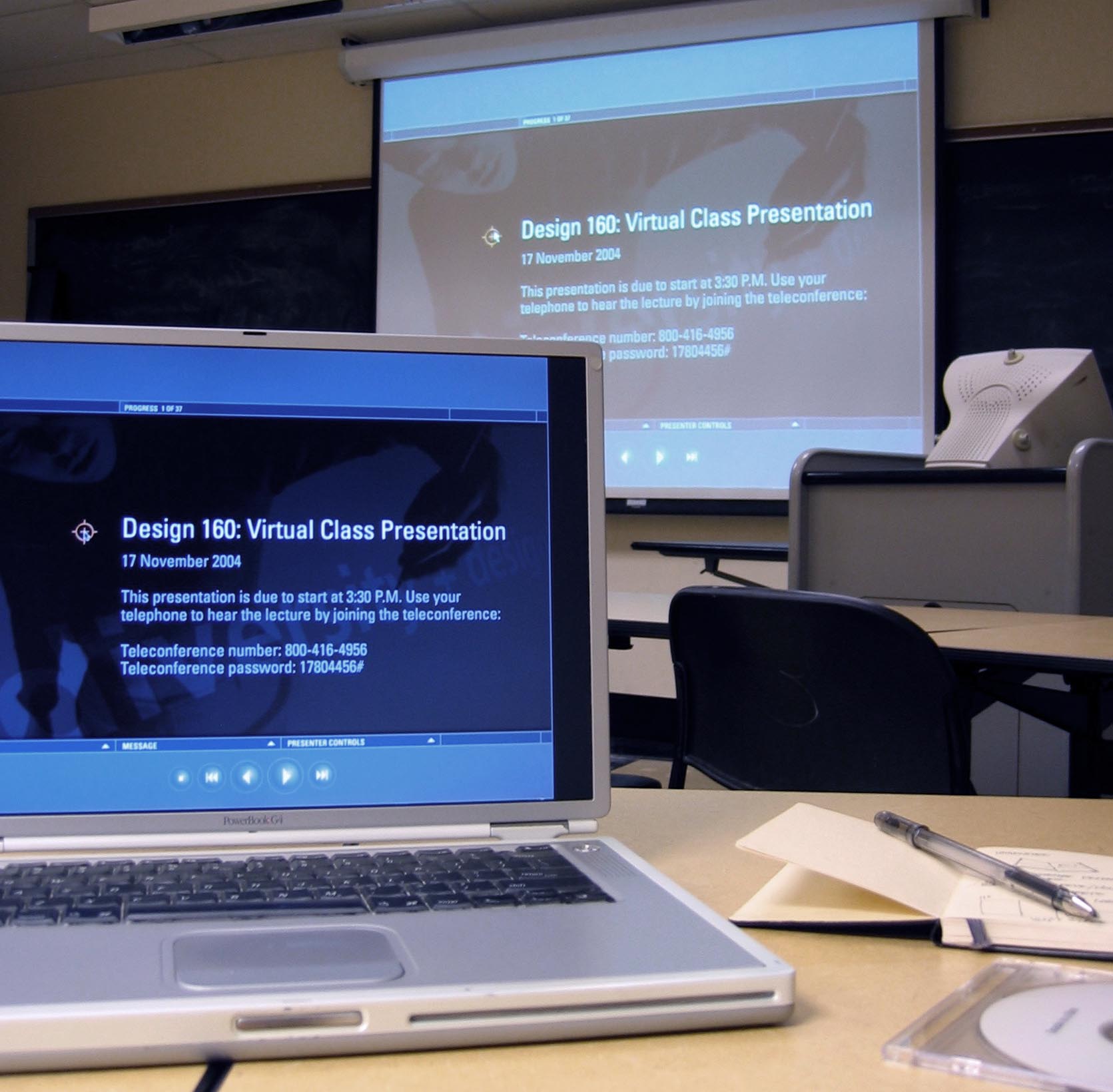
—Testing included deploying a functional prototype to serve as the visual media for a day in two different courses

—Data from particpants was collected through a paper survey for the control group and digitally for the experiemental group using an embedded link

—Data from particpants was collected through a paper survey for the control group and digitally for the experiemental group using an embedded link